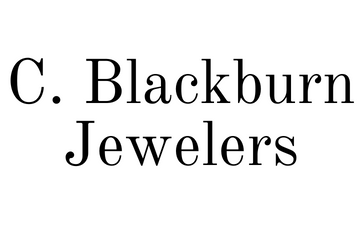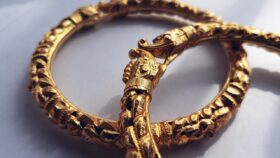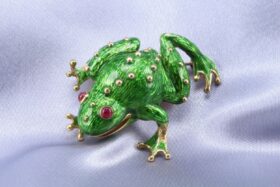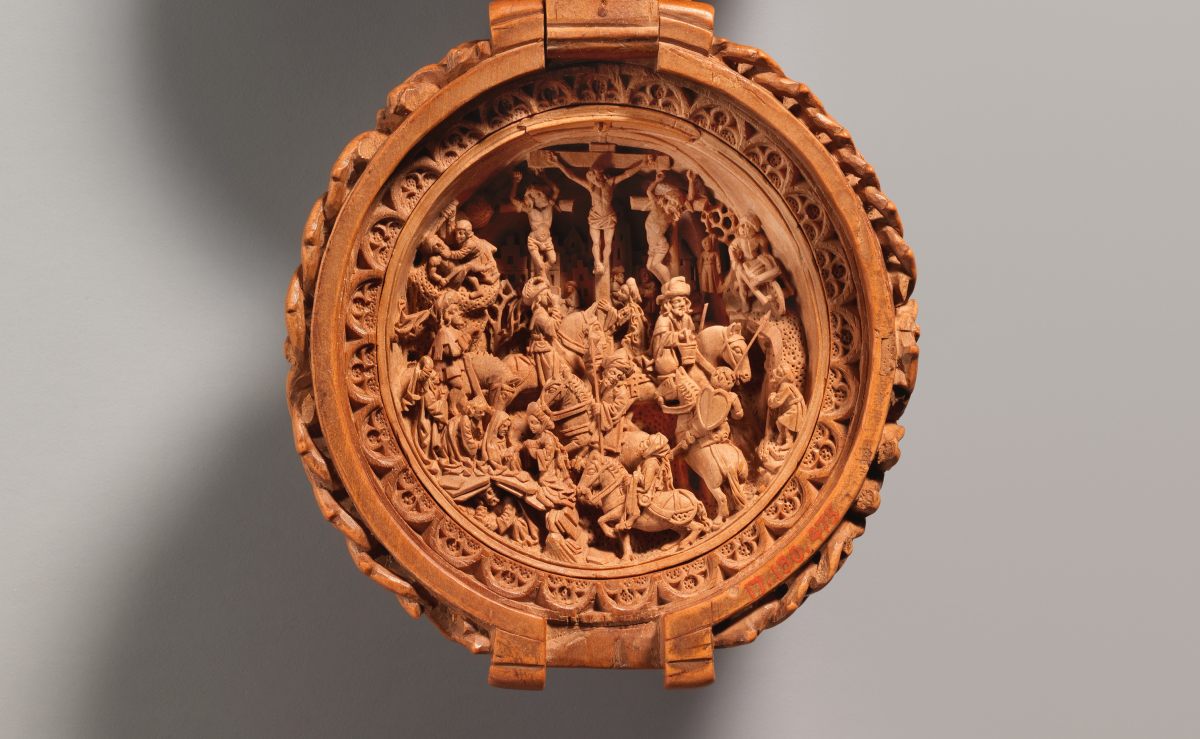
24 Jan Cross Jewelry: Its History Through the Ages
Seen above: The inside of a 16th century rosary bead carved with a crucifixion scene.
For centuries, the cross has been an enduring symbol of faith, serving as a powerful reminder of sacrifice, hope, and redemption. But beyond its religious significance, the cross has also evolved into a timeless fashion statement for those who are spiritually minded. Whether worn as an expression of Christian faith or spiritual enlightenment, cross jewelry has a rich history that spans cultures and generations.
The significance of the cross can be traced back to ancient civilizations such as Egypt and Mesopotamia, where the cross-like symbols were associated with life, fertility, and the afterlife. These early representations of the cross laid the foundation for its enduring symbolism in later cultures.
In Christianity, the cross became the ultimate symbol of sacrifice and salvation through the crucifixion of Jesus Christ. Early Christian symbols, such as the Chi-Rho and the anchor cross, emerged as distinct representations of the faith. These symbols not only served as expressions of devotion but also carried hidden meanings that provided solace to persecuted Christians.

Ancient Cross Jewelry: Egypt and Mesopotamia
In ancient Egypt, the ankh cross was a symbol of life and immortality. Its looped top, resembling a key, represented the key to the afterlife. The ankh was often worn as an amulet or crafted into intricate jewelry, adorning the necks, wrists, and fingers of pharaohs and high-ranking individuals. These exquisite pieces showcased the craftsmanship and artistry of the time.
Similarly, in Mesopotamia, the cross-like symbol known as the “crux ansata” held similar connotations of life and fertility. It was associated with the goddess Ishtar, the embodiment of love and war. Mesopotamian jewelry often featured the crux ansata, crafted in precious metals and adorned with gemstones, embodying the wealth and status of the wearer.
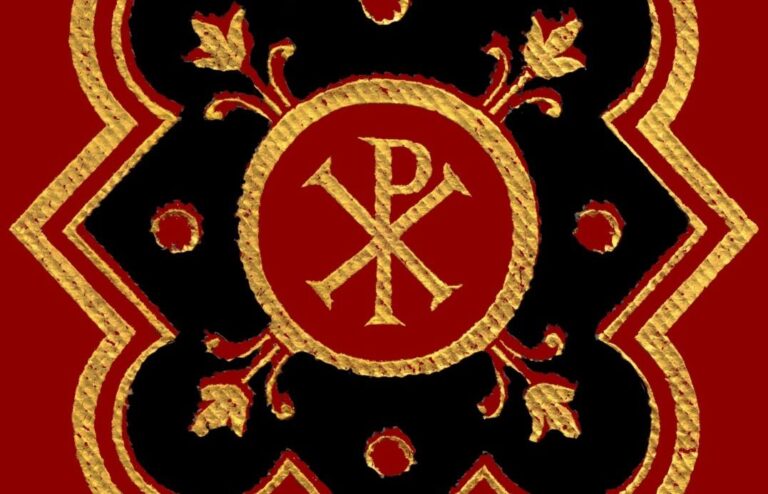
Cross Jewelry in Christianity
With the rise of Christianity, the cross took on a new level of significance. The crucifixion of Jesus Christ became the central event in Christian theology, and the cross became a powerful reminder of his sacrifice and the promise of redemption. Early Christian symbols, such as the Chi-Rho and the anchor cross, were used to represent the faith and its teachings.
The Chi-Rho symbol, formed by combining the first two letters of “Christ” in Greek, became a potent emblem of Christianity. It was often depicted within a circle, symbolizing eternity and the eternal nature of Christ’s love. Early Christians wore Chi-Rho symbols as pendants, rings, and brooches, displaying their devotion and identity.
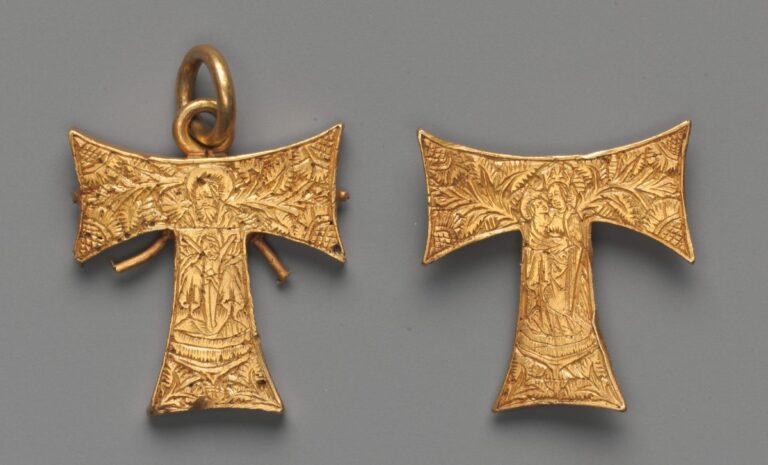
Cross Jewelry in Medieval Europe
During the Middle Ages, cross jewelry took on new forms and meanings in Europe. The Celtic cross, characterized by its intricate interlacing patterns, emerged as a distinctive symbol in Irish and Scottish cultures. It blended Christian and pagan influences, representing the intersection of faith and heritage. Celtic crosses were often crafted in precious metals and adorned with gemstones, showcasing the craftsmanship and wealth of the wearer.
The Tau Cross, shaped liked the Greek letter “tau” was also popular. This cross is also known as the Cross of St. Anthony: the Egyptian saint whose cloak bore this symbol.
In Medieval Europe, cross jewelry became an integral part of religious ceremonies and rituals. Cross pendants and rosaries were commonly worn by clergy and devout individuals as a visible sign of their faith. These pieces were often embellished with intricate engravings and gemstones, reflecting the opulence and status of the Church.
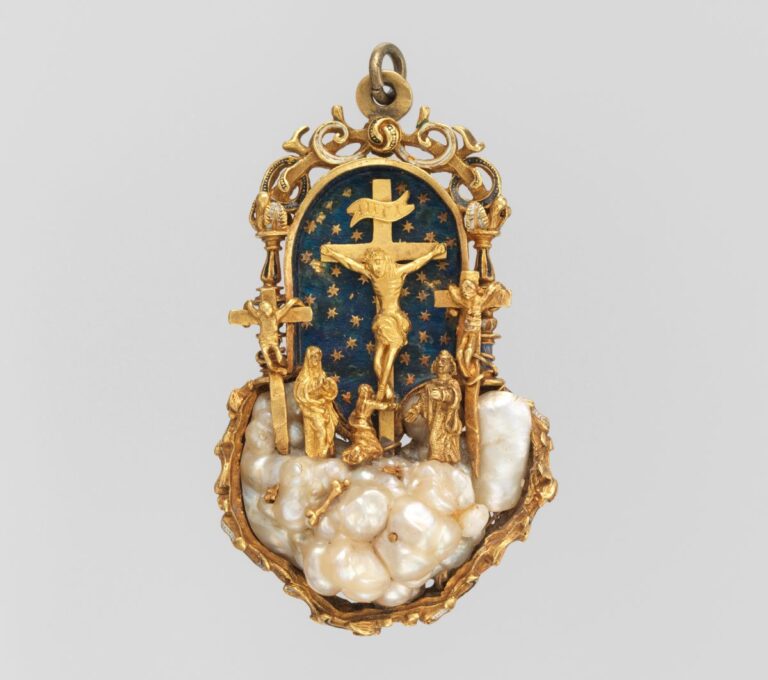
Renaissance and Baroque Cross Jewelry
The Renaissance and Baroque periods witnessed a resurgence of interest in cross jewelry, fueled by the flourishing art and fashion of the time. Cross pendants became larger and more ornate, often featuring intricate filigree work, enamel details, and gemstone embellishments. These opulent pieces were worn by both men and women as statements of wealth and social status.
In the Baroque era, cross jewelry took on a theatrical and extravagant aesthetic. Crosses were crafted in gold and silver, adorned with pearls, diamonds, and colorful gemstones. These lavish pieces were favored by royalty and aristocracy, who used them to display their power and influence.
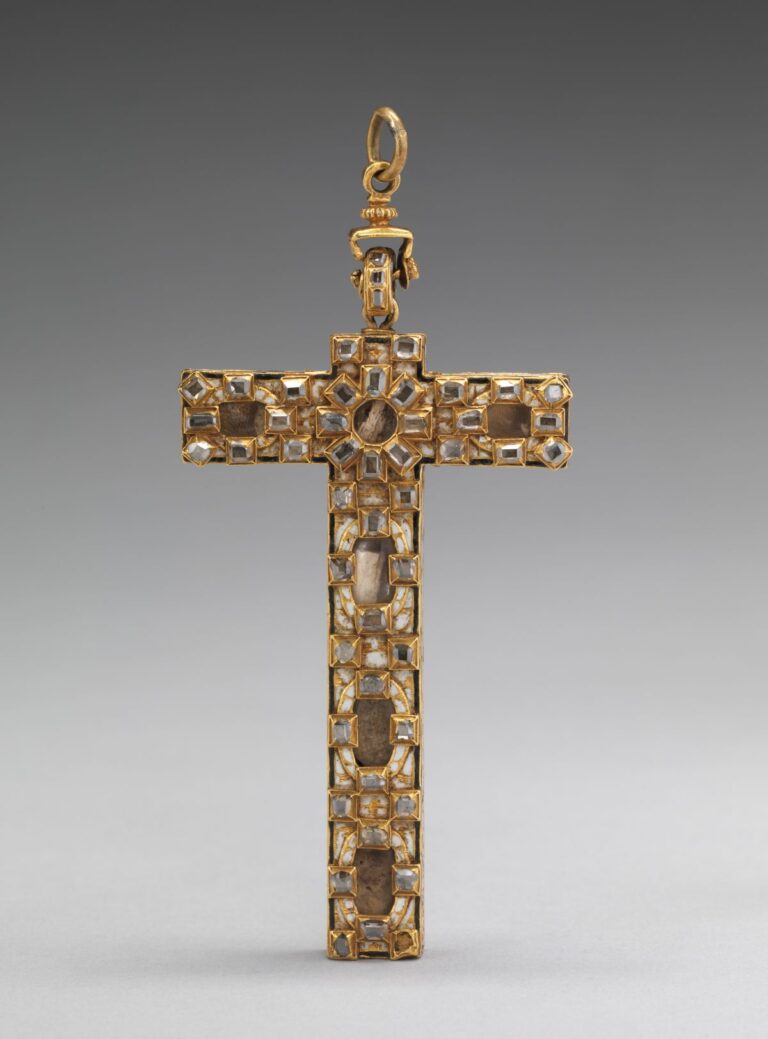
Cross Jewelry From Victorian Era to Present
During the Victorian era, cross jewelry took on a more sentimental and delicate style. Cross pendants became smaller and more intricate, often featuring floral motifs, enameled details, and delicate gemstone accents. These pieces were gifted as tokens of love and remembrance, often worn by women as symbols of their faith and devotion.
In the 20th and 21st centuries, cross jewelry has continued to evolve, reflecting changing fashion trends and cultural influences. From minimalist designs to bold statement pieces, cross pendants, earrings, and bracelets offer a wide range of options for expressing one’s faith or making a spiritual fashion statement. Contemporary designers experiment with materials, shapes, and textures, creating cross jewelry that is both timeless and on-trend.
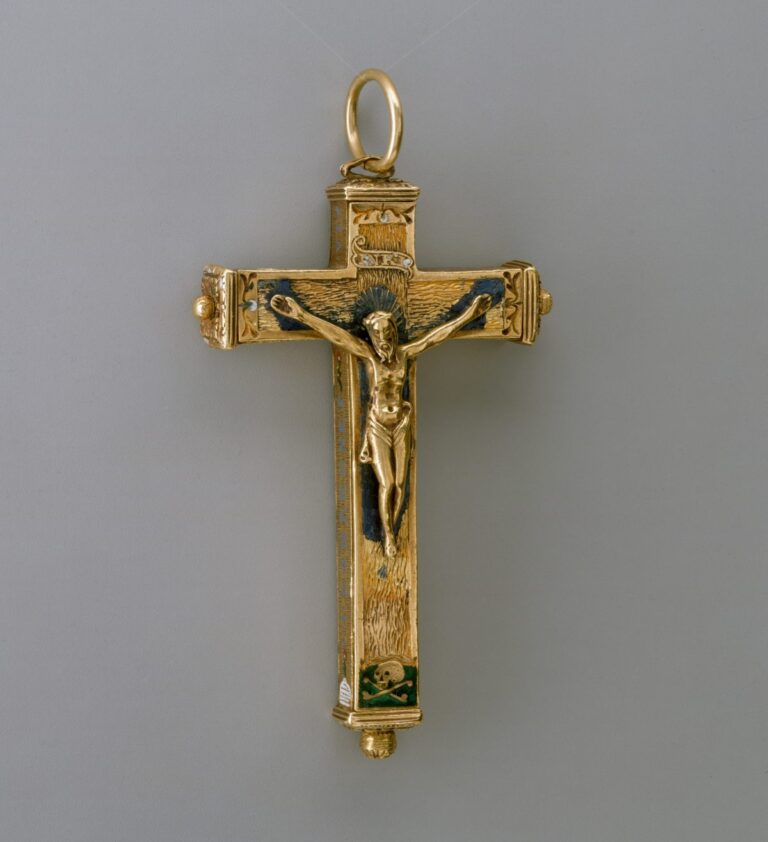
Cross Jewelry as a Spiritual Fashion Statement
Beyond its religious symbolism, cross jewelry has become a popular fashion statement for the spiritually minded. Celebrities and fashion influencers often incorporate cross necklaces, bracelets, and earrings into their outfits. The versatility of cross jewelry allows it to be paired with both casual and formal ensembles, adding a touch of elegance and personality.
Minimalist cross jewelry, characterized by clean lines and understated designs, has gained popularity in recent years. These delicate pieces can be worn alone for a subtle touch of style or layered for a more personalized look. They appeal to those who appreciate simplicity and prefer a more modern interpretation of the cross.
Bold statement pieces, on the other hand, feature large and ornate crosses that demand attention. These eye-catching designs often incorporate intricate details, such as filigree work, gemstone embellishments, or unique materials. They are favored by those who want to express their faith in a more dramatic way.
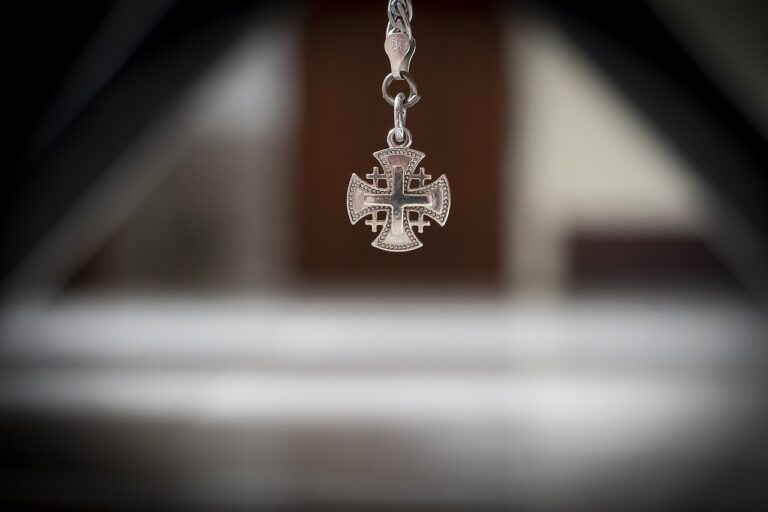
Popular Types of Cross Jewelry Today
In the modern world, cross jewelry comes in various forms and styles, catering to different tastes and preferences. Some of the popular types of cross jewelry include:
1. Cross Necklaces: A classic choice, cross necklaces come in a range of lengths and designs. From dainty diamond pendants to statement-making chains, there is a cross necklace to suit every style.
2. Cross Bracelets: Cross bracelets can be worn alone or stacked with other bracelets for a layered look. They are available in different materials, including gold, platinum, and silver.
3. Cross Earrings: Cross earrings add a touch of elegance to any outfit. From simple studs to dangling designs set with precious gemstones, cross earrings come in various styles to suit different occasions.
4. Cross Rings: Cross rings are a popular choice for those who want to incorporate the symbol into their everyday jewelry. They can be set with diamonds and/or colored gemstones, and worn as a statement piece or stacked with other rings for a fashionable look.
